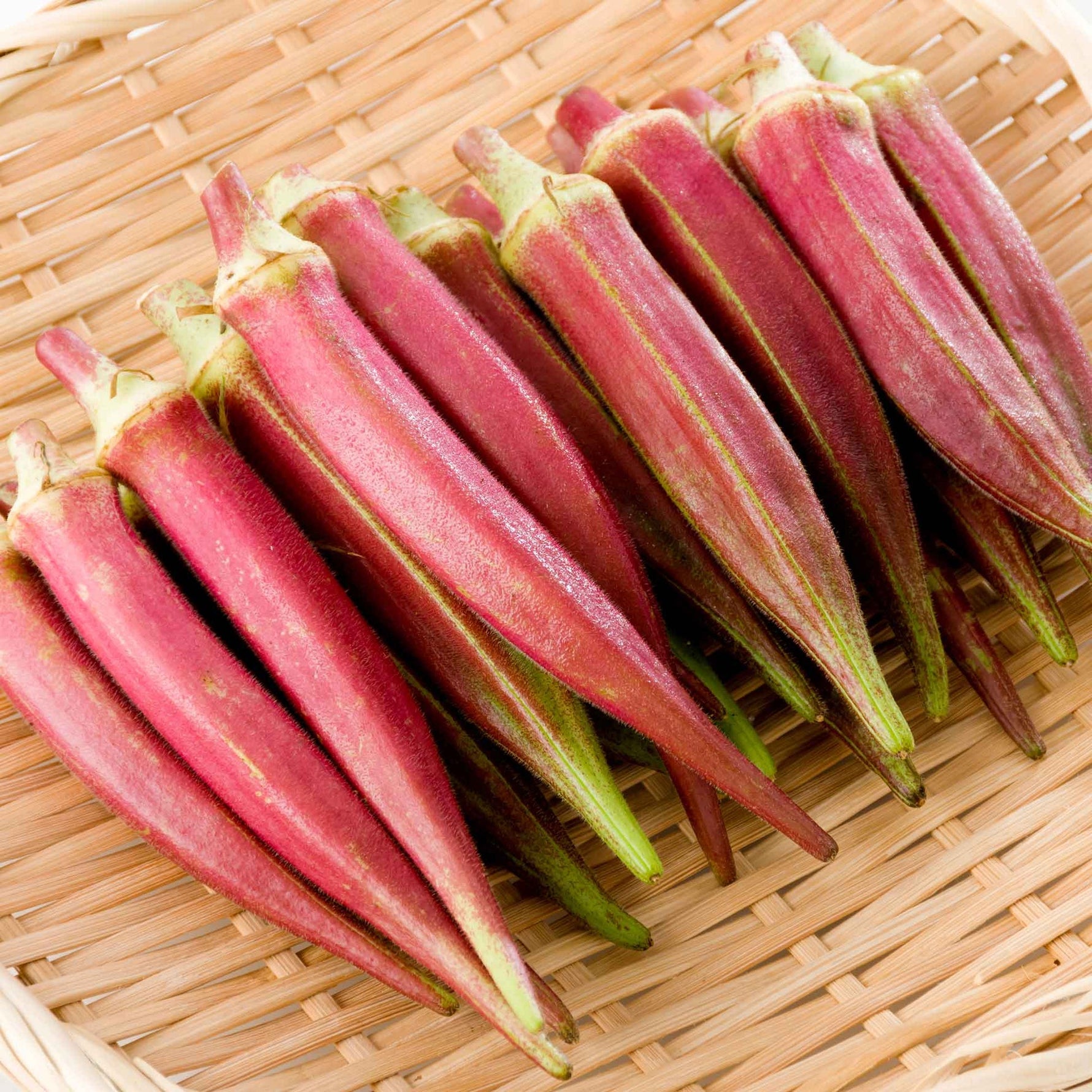
Dharaseeds
Okra Seeds - Jing Orange
Estimated delivery between April 15 and April 18.
Jing Orange is a unique and vibrant variety of okra, known for its striking orange-colored pods and excellent flavor. This high-yielding, heat-tolerant plant is a great choice for gardeners looking to add color and variety to their vegetable patch. Jing Orange okra has tender, mild-flavored pods that stay tender even when mature, making it ideal for a range of dishes. Perfect for gardeners in warmer climates, this variety thrives in hot temperatures and offers a visually appealing addition to your garden.
Key Benefits
- Vibrant Orange Pods: The eye-catching orange color of the pods adds beauty and novelty to your garden and dishes.
- Tender and Mild Flavor: Even when mature, the pods remain tender and have a mild, slightly sweet flavor that works well in various recipes.
- Heat-Tolerant: Jing Orange okra thrives in hot conditions, making it ideal for summer gardening in warmer climates.
- High Yield: Known for its prolific production, ensuring a reliable harvest with regular care.
- Versatile in the Kitchen: Perfect for frying, grilling, roasting, and adding to soups, stews, and stir-fries.
Variety Features
- Plant Characteristics: Jing Orange okra plants grow to about 3–4 feet tall with strong, upright stems and lush green foliage.
- Fruit Characteristics: The pods are 4–6 inches long, smooth, and bright orange when mature. They stay tender and flavorful for a long period.
- Flavor Profile: The flavor is mild, with a subtle sweetness that complements various savory dishes.
- Size: Plants typically reach 3–4 feet in height, with pods growing to around 4–6 inches in length when fully matured.
Planting Instructions
Planting Season
- Planting Time: Sow seeds in late spring to early summer, after the danger of frost has passed and when the soil temperature reaches 75°F–85°F (24°C–29°C).
- Ideal Temperature: Jing Orange okra thrives in high temperatures, making it perfect for hot, dry climates with long growing seasons.
Planting Details
- Seed Depth: Plant seeds about 1 inch deep in loose, well-drained soil to ensure proper root development.
- Spacing: Space plants 12–18 inches apart, and leave 36–48 inches between rows to promote air circulation and reduce disease risks.
- Soil Requirements: Prefers well-draining, fertile soil with a slightly acidic to neutral pH (6.0–7.0).
- Sunlight: Requires full sun for at least 6–8 hours per day to thrive and produce healthy pods.
Care Instructions
Watering
- Consistent Moisture: Okra plants need regular watering, especially during dry spells. Aim for about 1 inch of water per week, either through rainfall or irrigation.
- Watering Method: Water at the base of the plant to avoid wetting the foliage, which can promote fungal diseases.
Fertilization
- Organic Fertilizer: Apply a balanced fertilizer (such as 10-10-10) at planting time and again when the plants reach about 6 inches tall to support healthy growth and pod production.
- Soil Enrichment: Incorporating compost or organic matter into the soil before planting will improve soil texture, moisture retention, and nutrient content.
Weeding and Mulching
- Weeding: Keep the growing area free from weeds, which can compete for nutrients and water. Be careful when weeding to avoid damaging the shallow roots.
- Mulching: Apply mulch around the base of the plants to help retain moisture, suppress weed growth, and maintain a stable soil temperature.
Pest and Disease Control
- Pests: Common pests that affect okra include aphids, flea beetles, and caterpillars. Use organic methods like insecticidal soap or neem oil to manage pest populations.
- Diseases: Okra is susceptible to fungal diseases like downy mildew and verticillium wilt. Crop rotation and proper garden hygiene are essential to prevent disease buildup.
Harvesting
- Maturity: Jing Orange okra reaches maturity in 55–65 days after planting.
- Harvesting Size: Harvest pods when they are 4–6 inches long. They should be tender but not overripe, as mature pods can become tough and fibrous.
- Method: Use garden shears or scissors to cut the pods from the plant. Harvesting frequently will encourage the plant to produce more pods.
Storage
- Short-Term Storage: Okra can be stored in the refrigerator for up to 1 week. Place it in a perforated plastic bag to maintain freshness.
- Long-Term Storage: For long-term storage, blanch okra by immersing it in boiling water for 2–3 minutes, then cool in ice water before freezing it in freezer bags.
Culinary Uses
- Fried Okra: Slice the pods into rounds, coat them in cornmeal, and fry them for a delicious, crispy treat.
- Grilled or Roasted: Slice the pods and grill or roast them with olive oil and your favorite seasoning for a savory side dish.
- Soups and Stews: Add Jing Orange okra to your favorite soups, stews, or gumbo for a tender, flavorful addition.
- Stir-Fries: Use okra in stir-fries for its tender texture and mild flavor, which pairs well with other vegetables.
- Pickled Okra: The bright orange color makes it an excellent choice for pickling, adding a tangy, crunchy element to salads and snacks.
Conclusion
Jing Orange okra is a vibrant and flavorful variety that will bring color and productivity to your garden. Its heat tolerance, high yield, and tender, mild-flavored pods make it a great choice for both novice and experienced gardeners. Whether you're frying it, grilling it, or adding it to soups and stews, Jing Orange okra will enhance your culinary creations with its unique appearance and taste. Grow this beautiful and versatile vegetable for a striking addition to your vegetable garden!










